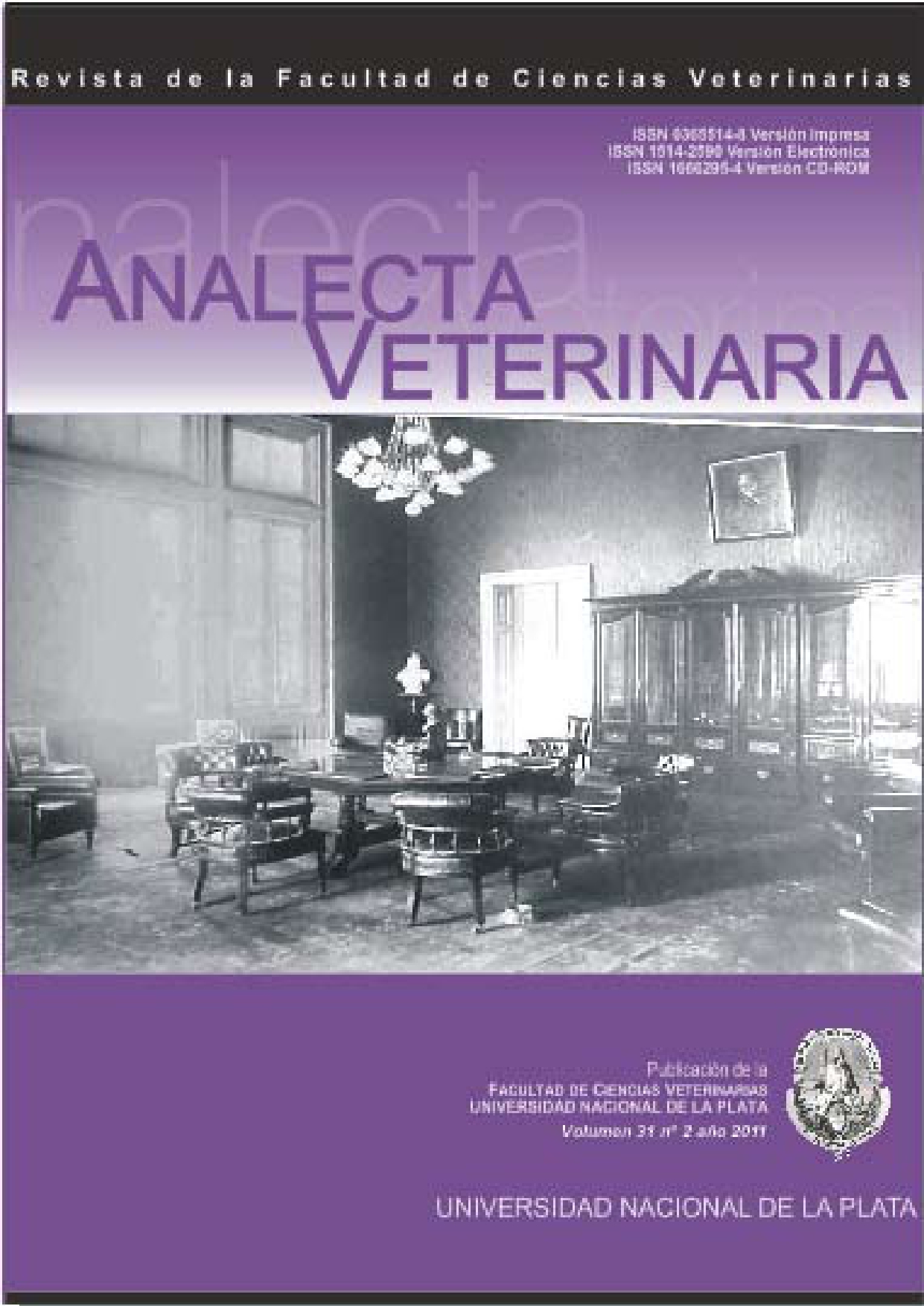Resistencia bacteriana a los antimicrobianos ocasionada por bombas de eflujo. Impacto en la multiresistencia
Palabras clave:
multirresistencia, antimicrobiano, bomba de eflujo, bacteriasResumen
La resistencia a los antimicrobianos representa un severo problema a nivel mundial. Se han descripto variados mecanismos de resistencia, entre los cuales se encuentran las bombas de eflujo. Estas son proteínas transportadoras de membrana, organizadas en superfamilias y distribuidas ubicuamente entre organismos procariotas y eucariotas. Los genes que codifican para las bombas de eflujo pueden estar localizados en el cromosoma bacteriano o bien en elementos genéticos transmisibles como los plásmidos. Algunos sistemas tienen la capacidad de expulsar antimicrobianos estructuralmente disímiles (Multiple Drug Resistance: MDR). La presencia de los mismos en combinación con otros mecanismos genera altos niveles de resistencia entre patógenos y comensales originando un consecuente fracaso terapéutico. Debido a la creciente importancia de este mecanismo de defensa microbiano se están investigando diversas estrategias para modificar y revertir la resistencia bacteriana por eflujo.
Descargas
Métricas
Citas
Davies J. Inactivation of antibiotics and the dis- semination of resistance genes. J Dairy Sci 1994; 264: 375-82.
Miller P, Rather P. Global response systems that cause resistance. En Lewis R, Sayers A, Taber H, Wax R, editors. Bacterial resistance to antimicrobials. New York, Basel, 2002, p. 60-82.
European Agency for Evaluation of Medicinal Prod- ucts. Antibiotic resistance in the European Union as- sociated with therapeutic use of veterinary medicines, 1999, EMEA/CVMP/342/99, London, UK.
Levy S. Emergence of antibiotic-resistance bacteria in the intestinal flora of farm inhabitants. J Infect Dis 1978, 137: 689-90.
Errecalde J. Uso de antimicrobianos en animales de consumo. Incidencias del desarrollo de resistencias en salud pública, Organización de las Naciones Unidas para la Agricultura y Alimentación FAO. Roma, Italia, 2004.
Webber M, Piddock L. The importante of efflux pumps in bacterial antibiotic resistance. J Antimicrob Chemother 2003, 51: 9-11.
Livermore D. Beta-lactamases in laboratory and clinical resistance. Clin Microbiol Rev 1995; 8: 557–84.
Mingeot-Leclercq M, Glupczynski Y, Tulkens P. Aminoglycosides: activity and resistance. Minireview. Antimicrob Agents Chemother 1999; 43: 727–37.
Ruiz J. Mechanisms of resistance to quinolones: target alterations, decreased accumulation and DNA gyrase protection. J Antimicrob Chemother 2003; 51: 1109-17.
Spratt R. Resistance to antibiotic mediated by target alterations. Science 1994, 264: 388-93.
Delcour A. Outer membrana permeability and antibiotic resistance. Biochim Biophys Acta 2009; 1794: 808–16.
Scatamburlo Moreira M, Chartone de Souza E, Alencar de Morais C. Multidrug efflux systems in gram – negative bacteria. Braz J Med Biol Res 2004; 35: 19-28.
Thanassi D, Cheng L, Nikaido H. Active efflux of bile salts by Escherichia coli. J Bacteriol 1997; 179: 2512-18.
Lynch A. Efflux systems in bacterial pathogens: An opportunity for therapeutic intervention? An industry view. Biochem Pharmacol 2006; 71: 949-56.
Saier M, Paulsen I, Sliwinski M, Pao S, Skuffay R, Nikaido H. Evolutionary origins of multidrug and drug-specific efflux pumps in bacteria. FACEB J 1998; 12: 265-74.
Van Bambeke F, Glupzynski Y, Plesiat P. Antibiotic efflux pumps in procaryotic cells: occurence, impact for resistance and strategies for the future of antimicrobial therapy. J Antimicrob Chemother 2003; 51:1167-73.
Okusu H, Ma D, Nikaido H. AcrAB efflux pump plays a major role in the antibiotic resistance pheno- type of Escherichia coli multiple-antibiotic-resistance (mar) mutants. J Bacteriol 1996; 178:306-08.
Van Bambeke F, Balzi E, Tulkens P. Antimicrobial efflux pumps. Biochem Pharmacol 2000; 60: 457-70.
Igarashi Y, Aoki K, Mamitsuka H, Kuma K, Kane- hisa M. The evolutionary repertoires of the Eukaryotic- Type ABC transporters in terms of the phylogeny of ATP-binding domains in eukaryotes and prokaryotes. Mol Biol Evol 2004; 21: 2149-60.
Shilling R, Balakrishnan L, Shahi S, Venter H, van Veen H. A new dimer interface for an ABC transporter. Int J Antimicrob Agents 2003; 22: 200-4.
Paulsen I, Brown M, Skurray R. Proton-dependent multidrug efflux systems. FEMS Microbiol Rev 1996; 60: 575-608.
Van Bambeke F, Pages J, Lee V. Inhibitors of bacterial efflux pumps as adjuvants in antibiotic treat- ments and diagnostic tools for detection of resistance by efflux. Recent Pat Antiinfect Drug Discov 2006, 1: 157-75.
Aeschlimann J. The role of multidrug efflux pumps in the antibiotic resistance of Pseudomonas aeruginosa and other gram-negative bacteria. Pharmacotherapy 2003; 23: 916–24.
Mesaros N, Van Bambeke F, Glupczynski Y, Vanhoof R, Tulkens P. L’Efflux des antibiotiques: Un mécanisme ubiquitaire conduisant à la résistance. Etat de la question el implications microbiologiques et cliniques. Louvain Medical 2005; 124, 8: 308-20.
Nikaido H. Multidrug efflux pumps of gramnegative bacteria. J Bacteriol 1996; 178: 5853-59.
Pos K. Drug transport mechanism of the AcrB efflux pump. Biochim Biophys Acta 2009; 1794: 782-93.
Piddock L. Clinically relevant chromosomally en- coded multidrug resistance efflux pumps in bacteria. Clin Microbiol Rev 2006; 19: 382-402.
Olliver A, Valle M, Chaslus-Dancla E, Cloeckaert A. Role of an acrR mutation in multidrug resistance of in vitro-selected fluoroquinolone-resistant mutants of Salmonella enterica serovar Typhimurium. FEMS Microbiol Lett 2004; 238: 267-72.
Pradel E, Pagès J. The AcrAB-TolC pump con- tributes to multidrug resistance in the nosocomial pathogen Enterobacter aerogenes. Antimicrob Agents Chemother 2002; 46: 2640-43.
Putman M, van Veen H, Konings W. Molecular properties of bacterial multidrug transporters. Micro- biol Mol Biol Rev 2000; 64: 672- 93.
Randall L, Ridley A, Cooles S, Sharma M, Sayers A, Pumbwe L et al. Prevalence of multiple antibiotic resistance in 443 Campylobacter spp. isolated from humans and animals. J Antimicrob Chemother 2003; 52: 507–10.
Noguchi N, Okada H, Narui K, Sasatsu M. Com- parison of the nucleotide sequence and expression of norA genes and microbial susceptibility in 21 strains of Staphylococcus aureus. Microbial Drug Resistance 2004; 10: 197–203.
Okamoto K, Gotoh N, Nishino T. Pseudomonas aeruginosa reveals high intrinsic resistance to penem antibiotics: penem resistance mechanisms and their interplay. Antimicrob Agents Chemother 2001; 45:1964–71.
Bornet C, Davin-Régli A, Bosi C, Pagès J, Bollet C. Imipenem resistance of Enterobacter aerogenes medi- ated by outer membrane permeability. J Clin Microbiol 2000; 38: 1048-52.
Mazzariol A, Cornaglia G, Nikaido H. Contributions of the AmpC β-lactamase and the AcrAB multidrug efflux system in intrinsic resistance of Escherichia coli k-12 to β-lactams. Antimicrob Agents Chemother 2000; 44: 1387–90.
Lomovskaya O, Lee A, Hoshino K, Ishida H, Mistry A, Warren M et al. Use of a genetic approach to evalu- ate the consequences of inhibition of efflux pumps in Pseudomonas aeruginosa. Antimicrob Agents Chemother 1999; 43: 1340–46.
Ziha-Zarifi I, Llanes C, Kohler T, Pechere JC, Plesiat P. In vivo emergence of multidrug-resistant mutants of Pseudomonas aeruginosa overexpressing the active efflux system MexA-MexB-OprM. Antimicrob Agents Chemother 1999; 43: 287-91.
Kriengkauykiat J, Porter E, Lomovskaya O. Use of an efflux pump inhibitor to determine the prevalence of efflux pump-mediated fluoroquinolone resistance and multidrug resistance in Pseudomonas aeruginosa. Antimicrob Agents Chemother 2005; 49: 565-70.
Cho D, Blais J, Tangen K, Ford C, Lee A, Lomovs- kaya O et al. Prevalence of efflux pump overexpression among clinical isolates of Pseudomonas aeruginosa. 39th Interscience Conference on Antimicrobial Agents and Chemotherapy, 1999, Abstract 1267, p 327, San Francisco, CA.
Elkins C, Nikaido H. Substrate specificity of the RND-type multidrug efflux pumps AcrB and AcrD of Es- cherichia coli is determined predominantly by two large periplasmic loops. J Bacteriol 2002; 184: 6490–98.
Everett M, Jin Y, Ricci V, Piddock L. Contribution of individual mechanisms to fluoroquinolone resis- tance in 36 Escherichia coli isolates from humans and animals. Antimicrob Agents Chemother 1996; 40: 2380-86.
Nikaido E, Yamaguchi A, Nishino K. AcrAB mul- tidrug efflux pump regulation in Salmonella enterica serovar Typhimurium by RamA in response to environ- mental signals. J Biol Chem 2008; 283: 24245–53.
Baucheron S, Tyler S, Boyd D, Mulvey M, Chaslus- Dancla E, Cloeckaert A. AcrAB-TolC directs efflux- mediated multidrug resistance in Salmonella enterica serovar Typhimurium DT104. Antimicrob Agents Chemother 2004; 48: 3729-35.
Lin J, Martinez A. Effect of efflux pump inhibitors on bile resistance and in vivo colonization of Campy- lobacter jejuni. J Antimicrob Chemother 2006; 58: 966–72.
Pumbwe L, Randall L, Woodward M, Piddock L. Expression of the efflux pump genes cmeB, cmeF and the porin gene porA in multiply antibiotic-resistant Campylobacter spp. J Antimicrob Chemother 2004; 54: 341-47.
Visalli M, Murphy E, Projan S, Bradford P. AcrAB multidrug efflux pump is associated with reduced levels of
susceptibility to tigecycline (GAR-936) in. Proteus mirabilis. Antimicrob Agents Chemother 2003; 47: 665-9.
Kern W, Oethinger M, Jellen-Ritter A. Non-target gene mutations in the development of fluoroquinolone resistance in Escherichia coli. Antimicrob Agents Chemother 2000; 44: 10-13.
Oethinger M, Kern W, Jellen-Ritter A. Ineffective- ness of topoisomerase mutations in mediating clinically significant fluoroquinolone resistance in Escherichia coli in the absence of the AcrAB efflux pump. Antimi- crob Agents Chemother 2000; 44: 814-20.
Bohnert J, Kern W. Selected arylpiperazines are capable of reversing multidrug resistance in Escheri- chia coli overexpressing RND efflux pumps. Antimicrob Agents Chemother 2005; 49: 849–52.
Chevalier J, Bredin J, Mahamoud A. Inhibitors of antibiotic efflux in resistant Enterobacter aerogenes and Klebsiella pneumoniae strains. Antimicrob Agents Chemother 2004; 48: 1043-46.
Hannula M, Hänninen M. Effect of putative efflux pump inhibitors and inducers on the antimicrobial susceptibility of Campylobacter jejuni and Campy- lobacter coli. J Med Microbiol 2008; 57: 851–55.
Hendricks O, Butterworth T, Kristiansen J. The in-vitro antimicrobial effect of non-antibiotics and putative inhibitors of efflux pumps on Pseudomonas aeruginosa and Staphylococcus aureus. Int J Antimi- crob Agents 2003; 22: 262-64.
Sáenz Y, Ruiz J, Zarazaga M, Teixidó M, Torres C, Vila J. Effect of the efflux pump inhibitor Phe-Arg-β- naphthylamide on the MIC values of the quinolones, tetracycline and chloramphenicol, in Escherichia coli isolates of different origin. J Antimicrob Chemother 2004; 53: 544-45.
Schumacher A, Steinke P, Bohnert J, Akova M, Jonas D, Kern W. Effect of 1-(1-naphthylmethyl)- piperazine, a novel putative efflux pump inhibitor, on antimicrobial drug susceptibility in clinical isolates of Enterobacteriaceae other than Escherichia coli. J Antimicrob Chemother 2006; 57: 344–48.
Hasdemir U, Chevalier J, Nordmann P. Detection and prevalence of active drug efflux mechanism in vari- ous multidrug-resistant Klebsiella pneumoniae strains from Turkey. J Clin Microbiol 2004; 42: 2701-06.
Thorrold C, Letsoalo M, Dusé A, Marais E. Efflux pump activity in fluoroquinolone and tetracycline re- sistant Salmonella and E. coli implicated in reduced susceptibility to household antimicrobial cleaning agents. Int J Food Microbiol 2007; 113: 315–20.
Sáenz Y, Briñas L, Dominguez E, Ruiz J, Zarazaga M, Vila J, Torres C. Mechanisms of resistance in multiple-antibiotic-resistant Escherichia coli strains of human, animal and food origins. Antimicrob Agents Chemother 2004; 48: 3996-4001.
Pantozzi FL, Moredo FA, Vigo GB, Giacoboni GL. Resistencia a los antimicrobianos en bacterias indica- doras y zoonóticas aisladas de animales domésticos en Argentina. Rev Argent Microbiol 2010; 42: 49-52.
Suk-Kyung L, Hee-Soo L, Hyang-Mi N, Yun-Sang C, Jong-Man K, Si-Wook S, et al. Antimicrobial resistance observed in Escherichia coli strains isolated from fecal samples of cattle and pigs in Korea during 2003–2004. Int J Food Microbiol 2007; 116: 283–86.
Elkins C, Mullis L. Substrate competition studies using whole-cell accumulation assays with the major tripartite multidrug efflux pumps of Escherichia coli. Antimicrob Agents Chemother 2007; 51: 923–29.
Descargas
Publicado
Cómo citar
Número
Sección
Licencia
Los autores/as conservan los derechos de autor y ceden a la revista el derecho de la primera publicación, con el trabajo registrado con la licencia de atribución de Creative Commons, que permite a terceros utilizar lo publicado siempre que mencionen la autoría del trabajo y a la primera publicación en esta revista.

Analecta Veterinaria por Facultad de Ciencias Veterinarias se distribuye bajo una Licencia Creative Commons Atribución-NoComercial-SinDerivar 4.0 Internacional.



























